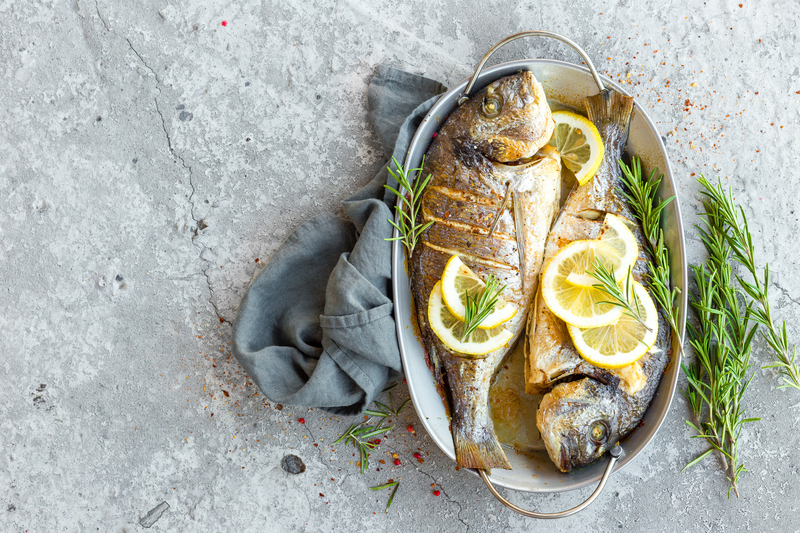 When it comes to cooking fish, baking is a popular and healthy method that can yield delicious results.
When it comes to cooking fish, baking is a popular and healthy method that can yield delicious results.
However, one common challenge faced by home cooks is the risk of drying out the fish during the baking process.
Overcooked fish can be disappointing, but fear not!
With the right techniques and a little know-how, you can bake fish to perfection, ensuring it remains moist, tender, and flavorful.
In this article, we’ll explore various methods and tips for baking fish without drying it out.
Choose the Right Fish
The journey to perfectly baked fish begins with your choice of fish.
Not all fish are created equal, and some are naturally more forgiving when it comes to baking.
Here are a few options to consider:
- Fatty Fish
Fish like salmon, mackerel, and trout are rich in healthy fats, which help keep them moist during baking.
Their natural oils add flavor and prevent dryness.
- Thick Fillets
Opt for thicker fish fillets, as they are less prone to drying out than thin ones.
Halibut, swordfish, and cod are good choices.
- Whole Fish
Baking a whole fish can also help retain moisture.
Options like branzino, sea bass, or snapper can be a flavorful and impressive choice.
Prepare Your Fish
 Properly preparing your fish before baking is crucial to achieving a moist result. Here’s what you need to do:
Properly preparing your fish before baking is crucial to achieving a moist result. Here’s what you need to do:
- Pat Dry
Use paper towels to pat your fish fillets or whole fish dry.
Moisture on the surface can hinder browning and caramelization.
- Season Well
Season your fish generously with salt and pepper.
You can also add herbs, spices, or citrus zest to enhance flavor.
- Add Fat
Brush your fish with olive oil, melted butter, or a flavorful sauce.
This not only adds moisture but also infuses flavor into the fish.
Use the Right Baking Dish
The type of baking dish you use can influence the cooking process.
Consider the following:
- Use a Baking Sheet
For even cooking and browning, place your fish on a baking sheet lined with parchment paper or a silicone baking mat.
This allows for good air circulation.
- Try a Baking Dish with Lid
Using a baking dish with a lid can help trap moisture, ensuring your fish remains succulent.
This is especially useful when baking whole fish.
Consider this Malacasa Ceramic Baking Dish.
Crafted from high-quality ceramic, this dish offers even heat distribution, excellent heat retention, and a nonstick surface that resists scratches.
The included lid helps lock in moisture and flavors while keeping food warm during serving and simplifying storage.
Control the Temperature

- Preheat Your Oven
Always preheat your oven to the desired temperature before placing your fish inside.
This ensures even cooking from the start.
- Optimal Temperature
Bake fish at a moderate temperature, typically around 350°F to 400°F (175°C to 200°C), depending on the thickness of the fish.
Cooking at too high a temperature can dry it out quickly.
Use the Right Timing
Timing is crucial when baking fish.
Here’s a general guideline:
- Calculate Cooking Time
A rule of thumb is to bake fish for about 10 minutes per inch of thickness.
Measure the thickest part of your fish fillet or whole fish to determine the appropriate cooking time.
- Check for Doneness
Fish is done when it flakes easily with a fork and the flesh is opaque.
Be careful not to overcook, as it can continue to cook even after removal from the oven.
Consider Moisture-Enhancing Techniques
- Add a Liquid
To infuse extra moisture and flavor, you can add a splash of white wine, fish stock, or a citrus-based sauce to your baking dish before placing it in the oven.
- Create a Foil Packet
For particularly delicate fish, such as tilapia or flounder, you can create a foil packet with your fish and other ingredients.
This method steams the fish, keeping it moist.
Let It Rest
 After your fish emerges from the oven, exercise patience and grant it a brief reprieve before diving in.
After your fish emerges from the oven, exercise patience and grant it a brief reprieve before diving in.
This short resting interlude serves a vital purpose – it permits the succulent juices to gracefully meander throughout the fish, guaranteeing a moist and profoundly flavorful outcome that will tantalize your taste buds.
Bottom Line – How to Bake Fish Without Drying It Out?
Baking fish without drying it out may seem like a culinary challenge, but with the right techniques and attention to detail, you can achieve moist, tender, and delicious results every time.
By choosing the right fish, proper preparation, using the right baking dish, controlling temperature and timing, and considering moisture-enhancing techniques, you’ll be well on your way to becoming a fish-baking expert in no time.
So, roll up your sleeves, grab your favorite fish, and get ready to impress your family and friends with perfectly baked fish dishes.



